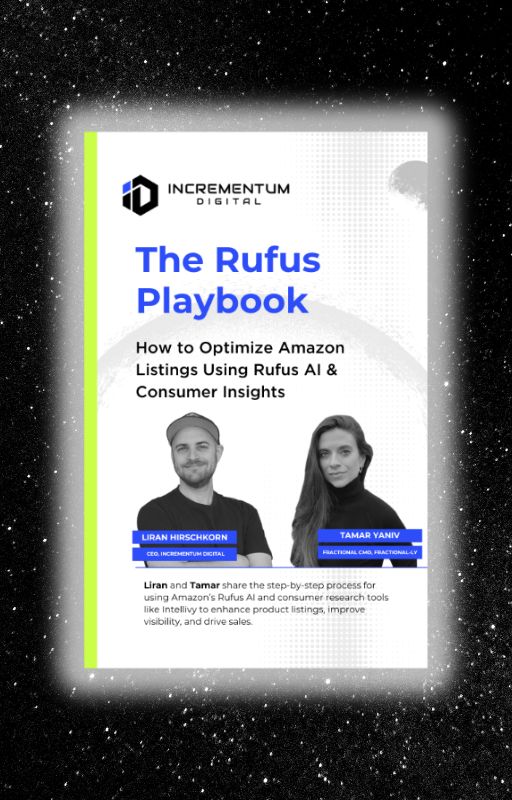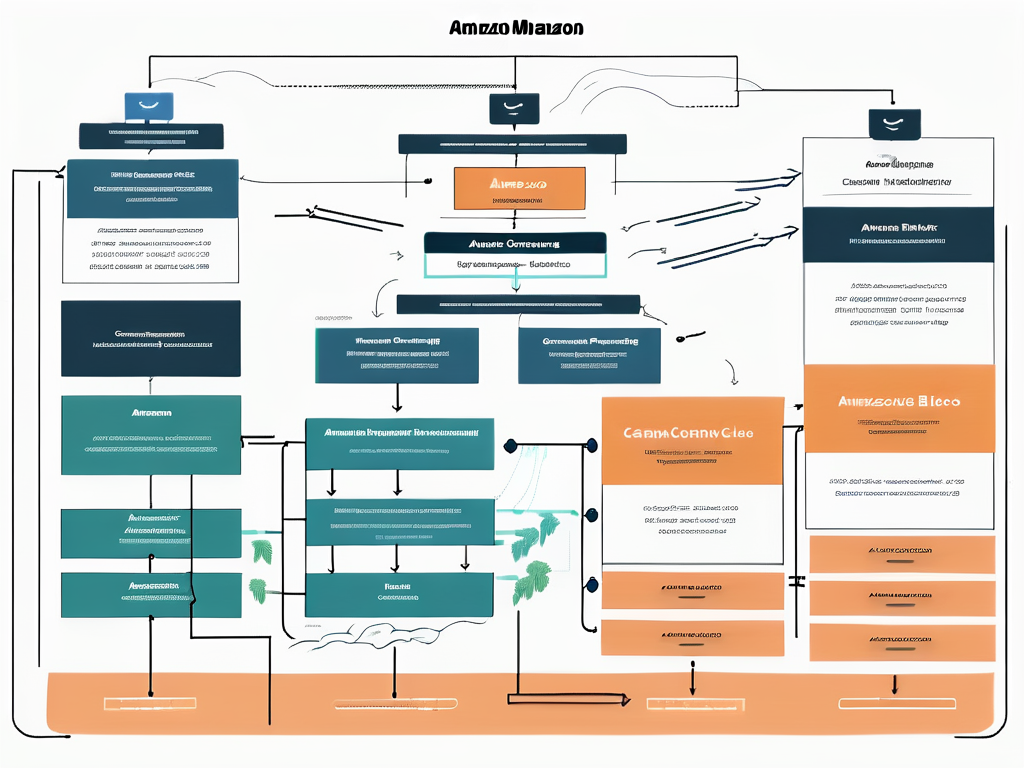Amazon Advertising
Amazon Campaign Management

Managing an Amazon campaign requires a thorough understanding of the platform’s campaign structure, bidding strategies, and optimization techniques. This article will guide you through the key elements of successful Amazon campaign management, helping you optimize your advertising efforts on the world’s largest online marketplace.

Learn How to Make Listings That Convert in 2025!
Read our step-by-step guide on how to optimize your listings using Rufus AI insights. Sign up for our newsletter and get your copy for free!
Show me howCampaign Structure
Central to effective Amazon campaign management is the establishment of a well-organized campaign structure. This involves structuring your campaigns into ad groups and categorizing them based on specific criteria such as product, brand, or display ads. By grouping similar products or ads together, you can streamline your management processes and ensure that each campaign is tailored to specific marketing objectives.
Furthermore, a well-structured campaign can also help you optimize your budget allocation and bidding strategy. Organizing your campaigns into logical groupings allows you to track performance metrics more easily and make data-driven decisions to improve your ROI. For example, by grouping high-performing products together, you can allocate more budget towards those campaigns to maximize their impact and drive more sales.
Another benefit of a well-organized campaign structure is the ability to easily test and iterate on different ad creatives and messaging. By grouping similar products or ads together, you can A/B test different variations to see which resonates best with your target audience. This iterative approach allows you to refine your campaigns over time, improving their effectiveness and ultimately driving better results for your Amazon business.
Bidding Strategies
When it comes to bidding on Amazon, there are two primary strategies to consider: manual bidding and automated bidding. Manual bidding allows advertisers to have full control over their bids and requires regular monitoring and adjustment to maintain optimal performance. On the other hand, automated bidding leverages algorithms to optimize bids automatically, saving time and effort. One popular automated bidding strategy on Amazon is Target ACoS (Advertising Cost of Sale), which sets bids to achieve a specific desired ACoS percentage.
Understanding the nuances of both manual and automated bidding strategies can significantly impact the success of your advertising campaigns on Amazon. While manual bidding provides granular control and customization options, automated bidding offers efficiency and scalability. It’s essential to evaluate your campaign goals and resources to determine which strategy aligns best with your objectives.
Manual Bidding
Manual bidding empowers advertisers to make precise bid adjustments based on campaign performance and profitability. It allows for flexibility and customization, enabling the optimization of bids for specific products, keywords, or target audiences. Daily monitoring and manual bid adjustments are crucial to achieving desired outcomes with this strategy.
With manual bidding, advertisers have the opportunity to react swiftly to market changes and competitor activities. By closely monitoring key performance indicators and adjusting bids accordingly, advertisers can capitalize on emerging trends and opportunities within the Amazon advertising landscape. This hands-on approach requires dedication and analytical skills but can yield significant returns when executed effectively.
Automated Bidding (Target ACoS)
Automated bidding, particularly through the use of Target ACoS, takes away the burden of constant manual monitoring and bid adjustments. By setting a target ACoS percentage based on your desired level of advertising investment and profitability, Amazon’s algorithms automatically adjust bids to achieve that target. This strategy is suitable for advertisers looking to scale their campaigns efficiently while maintaining profitability.
Target ACoS automated bidding is ideal for advertisers managing large product catalogs or complex campaigns. The algorithmic optimization ensures that bids are continuously adjusted to meet the specified ACoS goal, freeing up time for advertisers to focus on strategy and creative aspects of their campaigns. It’s crucial to regularly review the performance of automated bidding strategies to fine-tune settings and maximize results over time.
Optimization Techniques
Optimizing your Amazon campaigns is essential to maximize their potential and drive better results. Here are some key techniques to consider:
Keyword Optimization
Identifying and using relevant keywords is crucial for your ads to reach the right audience on Amazon. Thorough keyword research will help you understand the search terms that customers use to find products similar to yours. Optimize your campaigns by incorporating these keywords strategically into your ad copy, product titles, and backend search terms to increase visibility and drive conversions.
For example, let’s say you’re selling high-quality headphones on Amazon. Through keyword research, you discover that customers often search for terms like “wireless headphones,” “noise-canceling headphones,” and “Bluetooth headphones.” By incorporating these keywords into your ad copy and product titles, you can ensure that your headphones appear in relevant search results, increasing the chances of attracting potential customers.
Negative Keyword Management
Managing negative keywords is equally important as it allows you to exclude irrelevant search terms or products that may negatively impact campaign performance and budget. Regularly reviewing search term reports and adding negative keywords can help refine ad targeting, prevent wasted spend, and improve overall campaign efficiency.
Continuing with the previous example, let’s say you notice that your headphones are appearing in search results for terms like “earbuds” or “gaming headsets,” which are not relevant to your product. By adding these terms as negative keywords, you can ensure that your ads won’t show up for these irrelevant searches, saving your budget for more targeted and valuable clicks.
Ad Creative Optimization
Compelling ad creative is vital to catching customers’ attention and enticing them to click on your ads. Regularly test and optimize ad copy, headlines, and product images to identify the most impactful variations. A/B testing and monitoring key performance metrics, such as click-through rates and conversion rates, can help you fine-tune your creative elements to maximize campaign effectiveness.
Let’s say you’re running an ad campaign for your headphones, and you decide to test two different ad copy variations. In one variation, you highlight the noise-canceling feature, while in the other, you emphasize the wireless capability. By monitoring the click-through rates and conversion rates of each variation, you can determine which one resonates better with your target audience. This data-driven approach allows you to optimize your ad creative and allocate your resources towards the most effective messaging.
In conclusion, effective Amazon campaign management involves structuring campaigns, selecting appropriate bidding strategies, and leveraging optimization techniques to drive success. By implementing these best practices, you can enhance your advertising efforts on Amazon and achieve your marketing objectives with greater efficiency and profitability.
LET’S DISCOVER WHAT’S POSSIBLE FOR YOUR BRAND
We’re here to listen and uncover opportunities tailored to your unique goals.
Fill out the form to get started, and you’ll walk away with real insights and actionable recommendations—whether we work together or not.
- HANDS-ON LEADERSHIP
- AWARD-WINNING PARTNERSHIPS
- CUSTOM-BUILT SOLUTIONS







